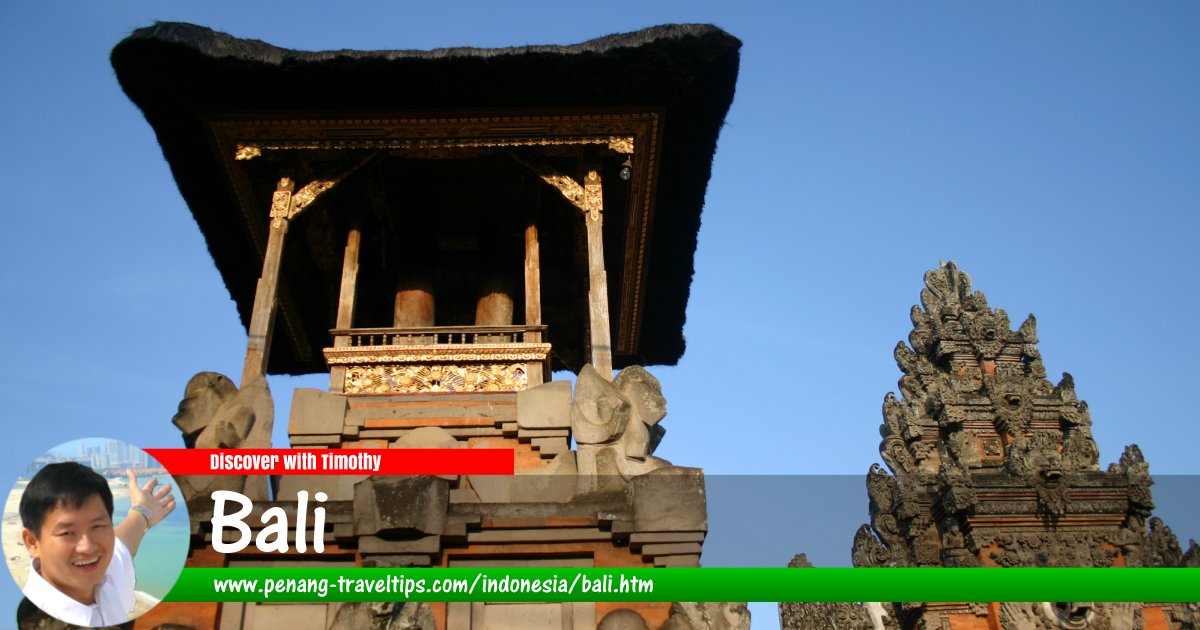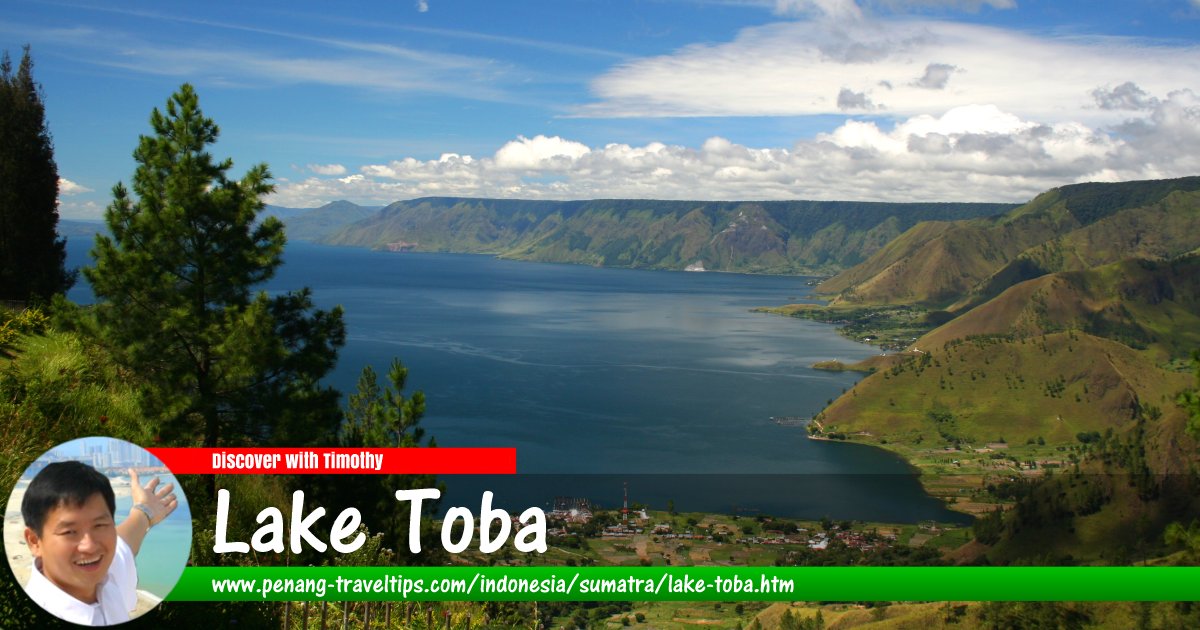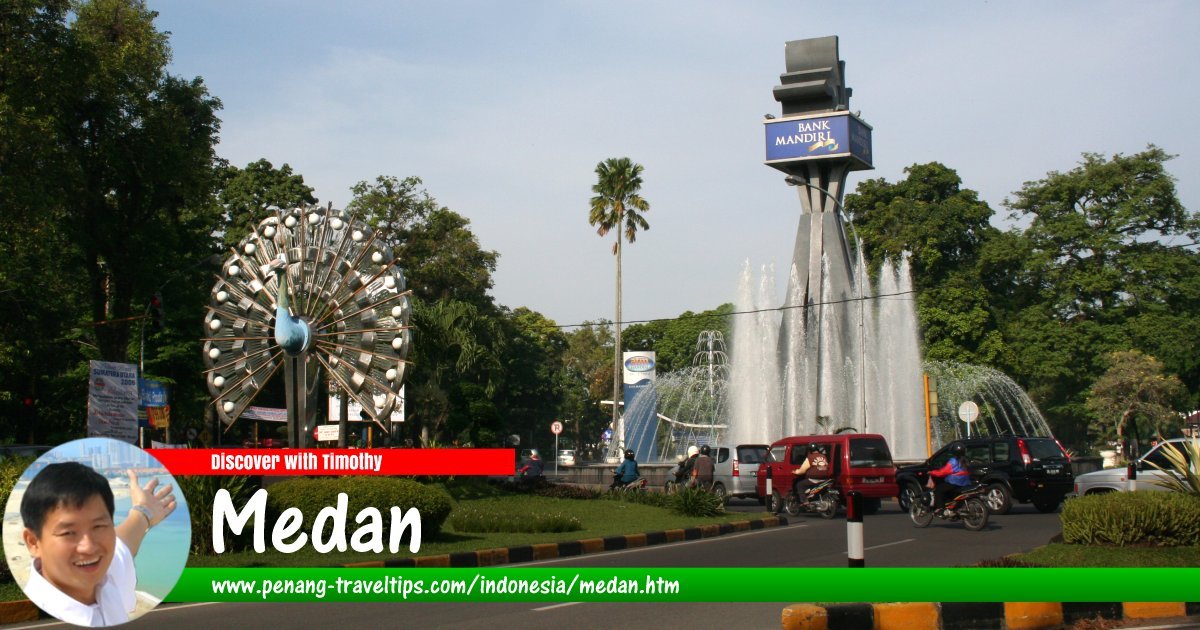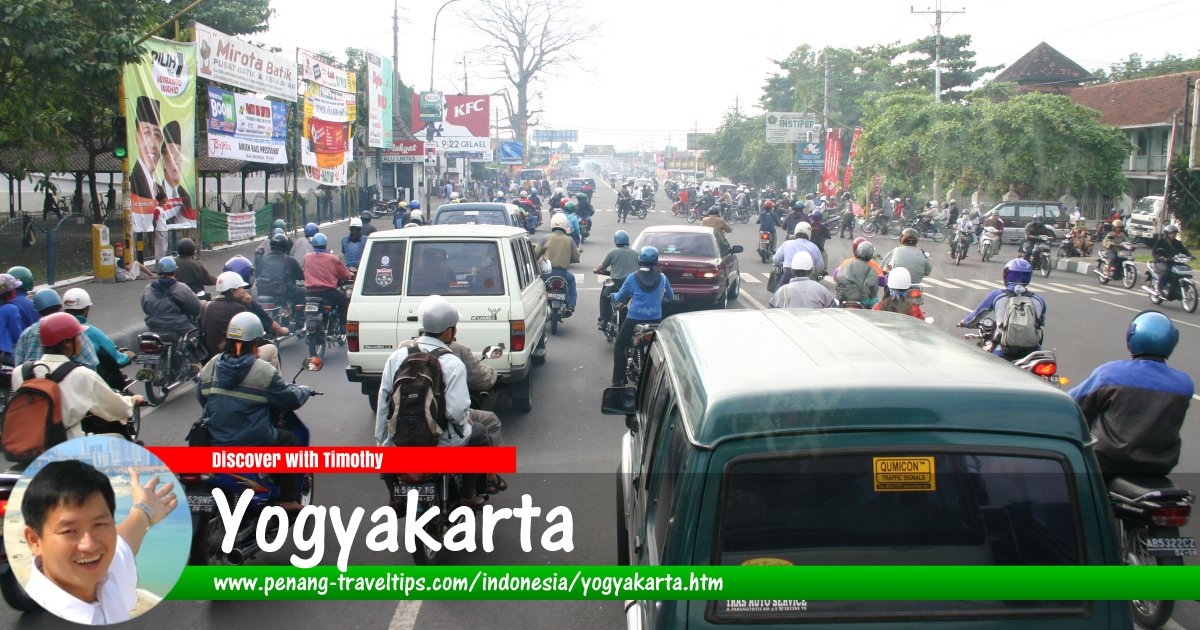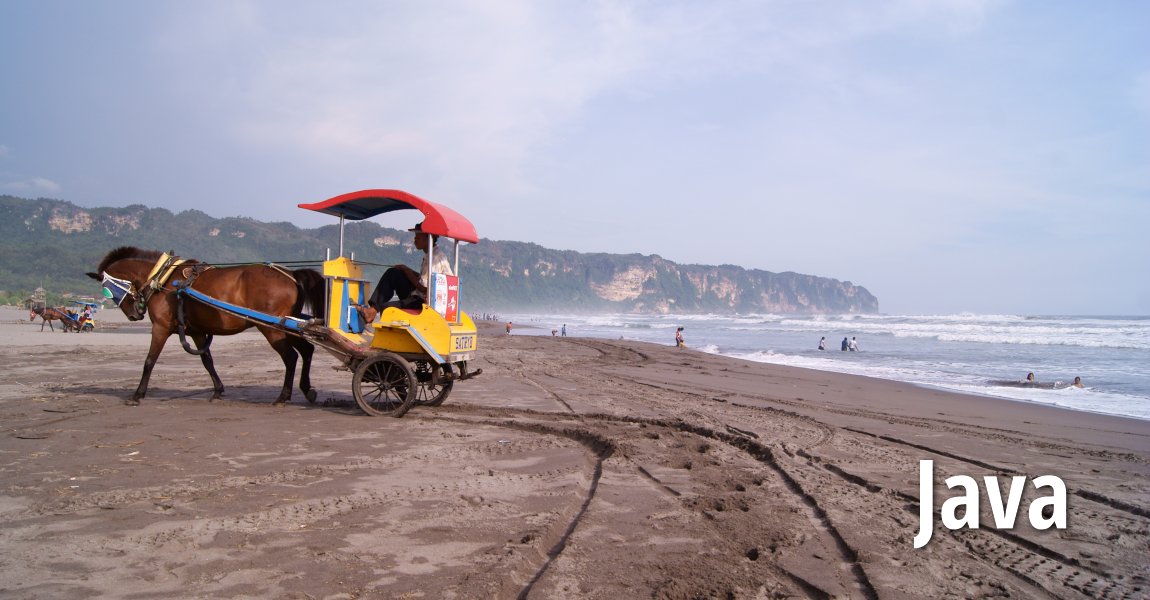 Horse cart at Parangtritis Beach in Yogyakarta, Java
Horse cart at Parangtritis Beach in Yogyakarta, JavaSource: http://commons.wikimedia.org/wiki/File:Parangtritis_Beach_2011_2.JPG
Author: Midori

Author: Midori

Java is an island in Indonesia that is also the most populous island in the world. It has a population of 136 million people (2011 estimate), whith is 60% of Indonesia's population. Covering 132,187 sq km (51,037.7 sq mi), Java is the 13th biggest island in the world, and the fifth biggest in Indonesia.
Through its long history, Java has seen a number of Hindu and Buddhist empires, today it is predominantly Muslim. The majority of its population speak Javanese, a language spoken by 60 million of the population of Indonesia.
Java is part of the Greater Sunda Islands. It is between Sumatra to the west and Bali to the east. A line of 38 mountains form the central spine of the island, the majority of which have been an active volcano at one time or are presently still active. The highest mountain in Java is the stratovolcano Mount Semeru (3,676 m). The most active volcano in Java as well as in the whole Indonesia is Mount Merapi (2,968 m).
Members' dining experience in Java
- Takahashi Rika posted about bakso at Bakso Semar in Coblong, Indonesia on 1 October, 2019
Major Cities in Java
- Jakarta - national capital
- Bandung
- Bogor
- Jember
- Malang
- Semarang
- Solo
- Surabaya
- Yogyakarta
Provinces of Java
- Banten
- Central Java
- East Java
- West Java
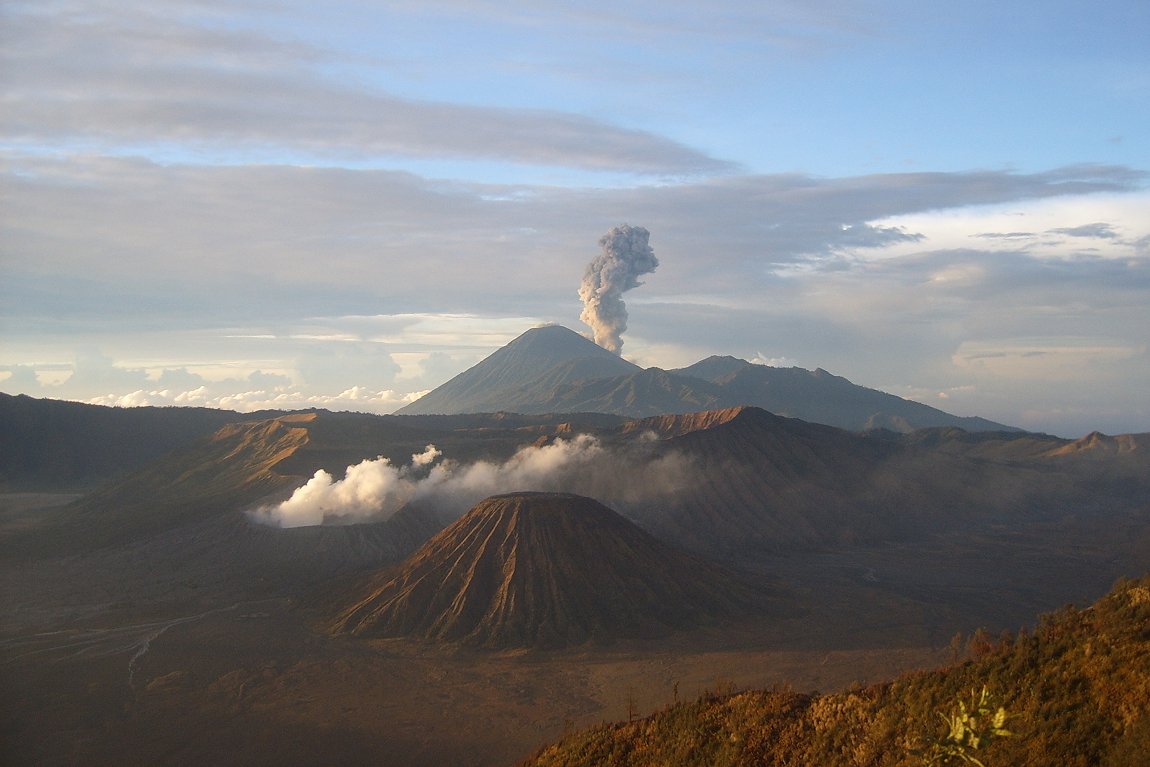 Mount Bromo and Mount Semeru volcanoes, Java
Mount Bromo and Mount Semeru volcanoes, JavaSource: http://commons.wikimedia.org/wiki/File:Bromo-semeru01.jpg
Author: Vberger

Author: Vberger

Most of the people in Java still live in the countryside, although the island has some of the biggest cities in Indonesia. Agriculture remains a predominant occupation. Java is one of the biggest producer of rice in the world. Java is also world renowned as a coffee producer. Java coffee can be a number of varieties of coffee grown in Java, but usually refer to the high quality Coffea arabica grown in the Ijen Plateau of Java.
The history of human habitation in Java goes back to the Java Man, the Homo erectus remains discovered by the banks of the Bengawan Solo River. The fossil is dated to be 1.7 million years old.
Various Hindu and Buddhist kingdoms have appeared in Java as early as the 4th century. Seafarers from the Indian subcontinent arrived on the island, spreading their religion to the local population. By the 8th century, the Sailendra dynasty appeared in the Kedu Plains of Java, leaving behind huge monuments such as the Borobudur and Prambanan. By the 10th century, other Hindu kingdoms appeared in Java.
Among the most dominant powers to rule Java was the Majapahit Empire. Meanwhile Islam arrived in Indonesia since the 11th century. By the 16th century, it has become the dominant religion surpassing Hinduism and Buddhism. The rise of Islam coincided with the decline in the power of the Majapahit Empire.
The Portuguese was the first European power to reach Java. The first contact was established in 1522. This was followed by the Dutch in 1596. In the next two hundred years, the Dutch expanded their influence over Java, eventually overcoming the local sultans who were too fragmented to exert an effective response to the Dutch threat. The Dutch turned the Javanese rulers into regents within a colonial administrative structure.
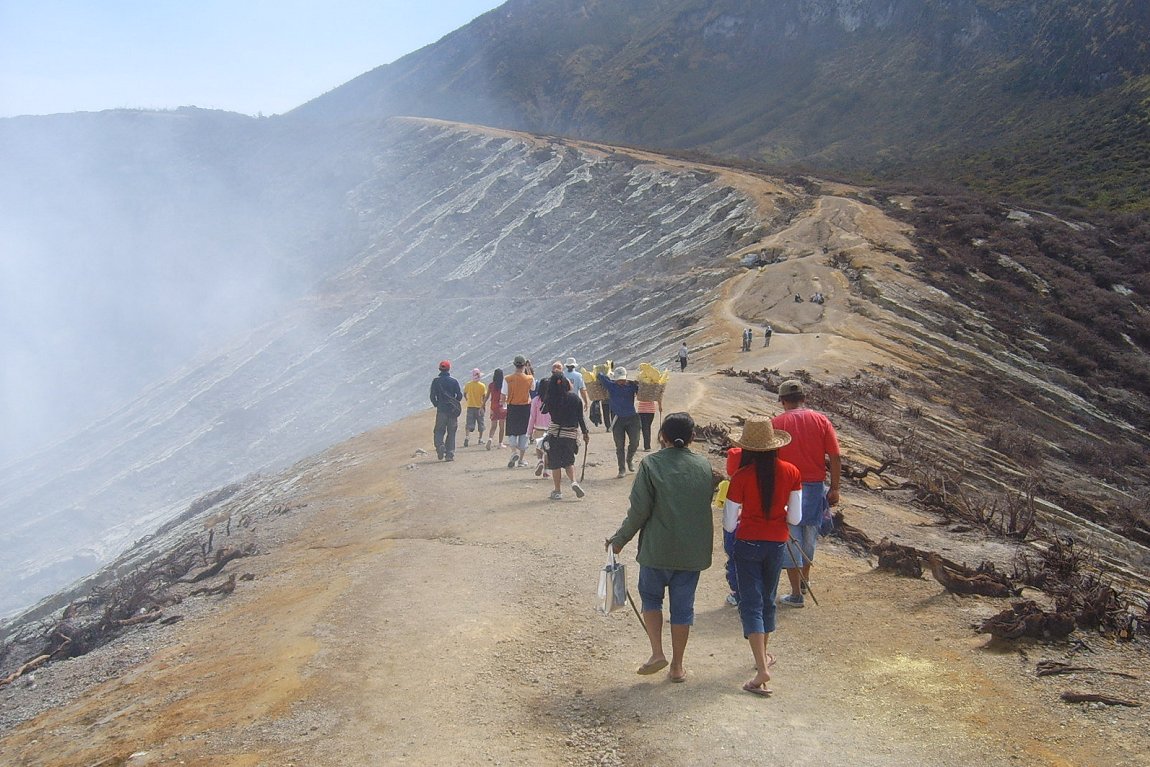 Ijen volcano, Java
Ijen volcano, JavaSource: http://commons.wikimedia.org/wiki/File:Ijen01.jpg
Author: Vberger

Author: Vberger

The population of Java experienced an explosive growth between the hundred years from 1840 to 1940, contributed partly by there being no major famines, and a general lowering of the age of marriage, which resulted in an increase in the number of children per family. This made Java the most densely populated major island in the world, and forced the government to embark on a transmigration program to transfer the people from overpopulated Java to lesser populated islands. This program, which ran from the 1970's to the end of the Suharto regime in 1998, has caused much friction between the Javanese newcomers and the host population of many neighboring islands.
Nationalistic sentiment in Java helped the country in its fight towards securing independence after the Second World War, and today, Java still dominate the social, political and economic landscape of Indonesia.
Visiting Java
International visitors to Java may arrive at the international airports in Jakarta, Bandung, Semarang, Surabaya, Solo and Yogyakarta. There is a plethora of local and international airlines flying to these destinations including Garuda Indonesia, Merpati, Mandala Airlines, Sriwijaya Air, AirAsia, Singapore Airlines, Malaysia Airlines, Thai International, Qantas, and more. Latest updates on Penang Travel Tips
Latest updates on Penang Travel Tips
 Destination Indonesia
Destination Indonesia

Copyright © 2003-2025 Timothy Tye. All Rights Reserved.

 Go Back
Go Back